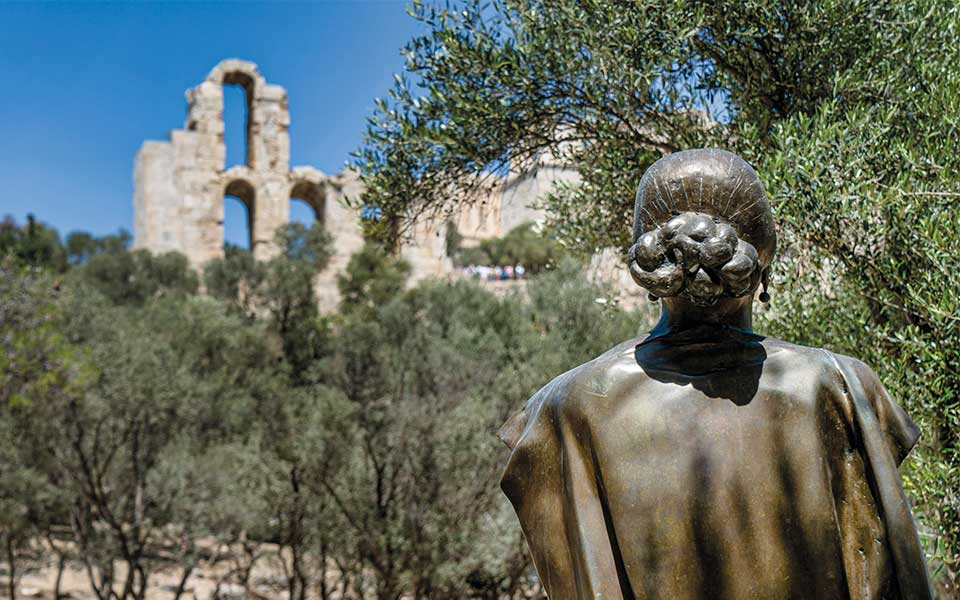The opera diva᾽s brief eight-year stay in Athens was vital to her development. “In truth, it was in Athens where she completed her only formal music studies” says Vasilis Louras, Director of Communications at the Greek National Opera, who came up with the idea for the documentary “Mary, Marianna, Maria.” The 104-minute-long film, which premiered on December 2nd, the centenary of Callas’ birth, poignantly explores the relatively unknown period in her life, before her departure for New York. The documentary focuses on her early career debuts, the defining individuals in her life, her early artistic triumphs, and the attacks she faced at the time, all against the backdrop of Greece’s socio-political realities during World War II, the Civil War, and beyond.
The documentary also sheds light on the occasions when Callas returned to Greece, including her recital at the Odeon of Herodes Atticus in 1957 and her legendary performances in Epidaurus as Norma in 1960 and Medea in 1961. The impetus for the film and the research behind it was the realization, during a press conference to announce the program for the upcoming season, that the international press was not aware of her full story. “I realized that even cultural editors specializing in Callas were unaware of her time in Athens. I thought it was our duty as an organization to fill this void through an audio-visual document that would allow them to understand the significance of these years,” says Louras, who co-directed the film with Michalis Asthenidis.
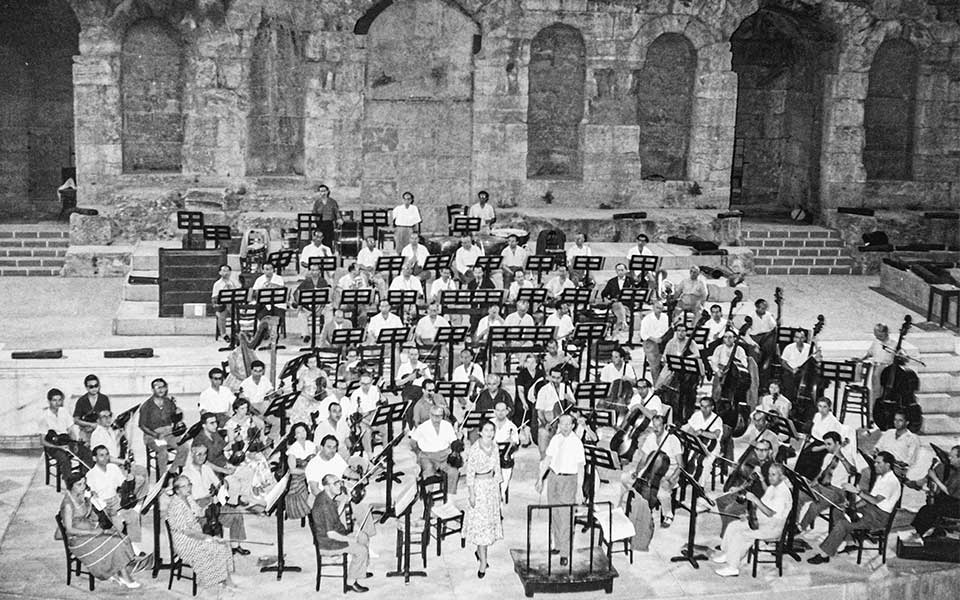
© Kostas Megalokonomou/Benaki Museum/Photographic Archives
First rejection, first applause
It was in 1937 when Maria first made her way to 35 Pireos Street, the building that housed the Athens Conservatoire. She was not accepted there, so her mother decided to enroll her in the Greek National Conservatoire on the corner of Solomou and 3 Septemvriou streets, for tuition under Maria Trivella, who agreed to teach her because she was impressed by her talent. One year later, on April 11, 1938, Kalogeropoulou made her student debut, during a recital by Trivella’s class at the Parnassos Literary Society (8 Platia Karytsi), by performing excerpts from various operas, including Tosca. She was just 15 years old.
On September 16, 1939, Kalogeropoulou attempted once again to audition for the Athens Conservatoire but she was met with hostility. However, the renowned Spanish soprano Elvira de Hidalgo, who had been teaching at the conservatoire since 1934, tried to sway the committee and, in particular, the conservatoire’s director, Philoctetes Economides. “Forget about her! She won’t be any good and she will cause you problems; she is arrogant,” was his reply. But de Hidalgo would not budge, telling the committee that she not only thought the candidate in question was an amazing talent, but that she would be happy to teach her and waive her tuition expenses entirely.
Maria auditioned at the Athens Conservatoire with “Ocean, Thou Mighty Monster” from Weber’s Oberon, which she had performed three months earlier at the Parnassos Literary Society. It was a triumph. At the age of 16, she enrolled at the conservatoire as student No. 1862 and was awarded a scholarship.

© Athens Conservatoire Archive/Stathis Arfanis Collection-Archive
Memorizing roles
From the very first day, Maria was a model student, completely dedicated to her studies, displaying great inner strength and a strong belief in her abilities. The words used to describe her during those years were often contradictory: dutiful, disciplined, conscientious, virtuous, but also rigid, egocentric, impertinent and abrupt. Many of her fellow students and tutors spoke of how she would enter and leave the classes without saying a word to anyone. “At first, she was the laughing stock of the conservatoire,” noted de Hidalgo in an interview in 1968. “My colleagues pitied me, while her fellow students teased her mercilessly. It is true that she was terribly awkward, plump, and with nothing endearing about her.”
Maria, however, was not discouraged. She would frequently arrive at her tutor’s home at 10 in the morning before heading off to continue her lessons at the conservatoire until late at night. She memorized entire works effortlessly and practiced even when far from the piano. “I’d learned the roles from Norma and La Gioconda long before I could sing properly. In this way, I was able to think about the pieces even when on a bus or walking down the street. There’s so much you can do with your mind. You don’t always need a piano; you don’t even have to open your mouth.”
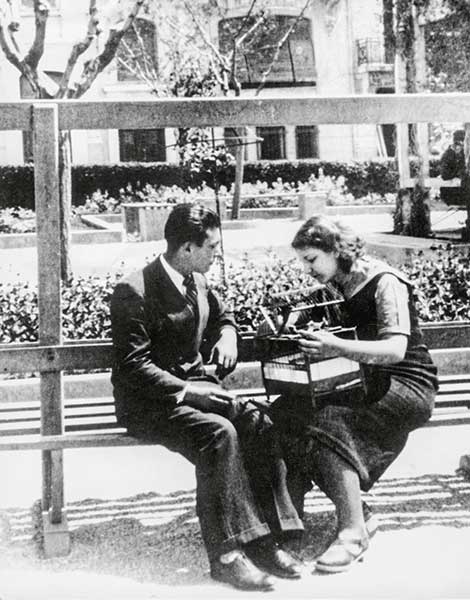
© Getty Images/Ideal Image
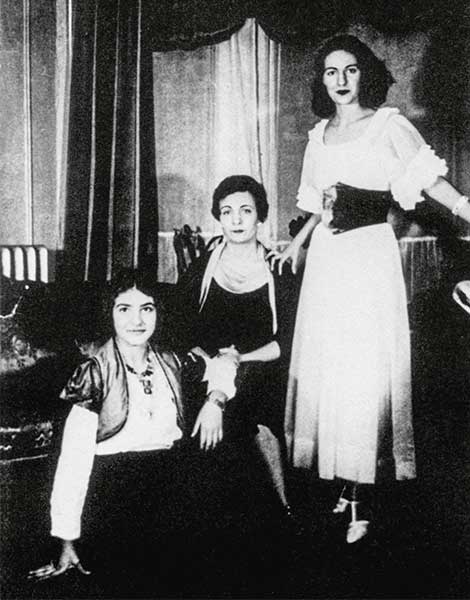
© Visualhellas.gr
Maria lived with her mother, Evangelia (“Litsa”) Dimitriadou and her sister, Jackie, not far from the home of her vocal coach. One of their first houses was at 70 Harilaou Trikoupi Street. In 1939, they moved to a ground-floor three-room residence at 5 Marnis Street, but a few months later they moved to the 5th floor of an Art Deco apartment building at 61 Patission Street.
“We don’t know what would have happened if Callas had not met de Hidalgo,” says Louras. “The fact that she met her was of utmost importance for her development, as de Hidalgo provided her with all the necessary tools. She introduced her to an extensive repertoire, taught her the correct vocal placement, how to study, how to interpret roles, how to stand on stage, how to dress, how to walk, and how to express herself with her hands.”
Maria spent more time at her tutor’s house than her own. She attended the parties thrown by the Spanish coloratura soprano, usually at Christmas and Easter, and joined the trips to nearby beaches organized by de Hidalgo up until 1940. All the students at the conservatoire would meet up on weekends at 8 in the morning outside the Athens Eye Clinic on Sina Street to board the big open-top buses for Glyfada, Kavouri or Vouliagmeni. Maria was a keen swimmer. “You could see that she was in her element in the water,” her fellow students recalled. But even after a relaxing day at the seaside, on the return to Athens she would speak only about opera: the demands of each role, matters relating to acting, and the importance of having a good stage partner.
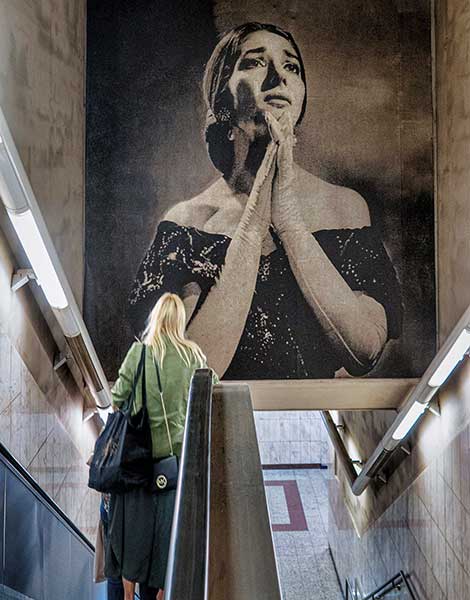
© Perikles Merakos
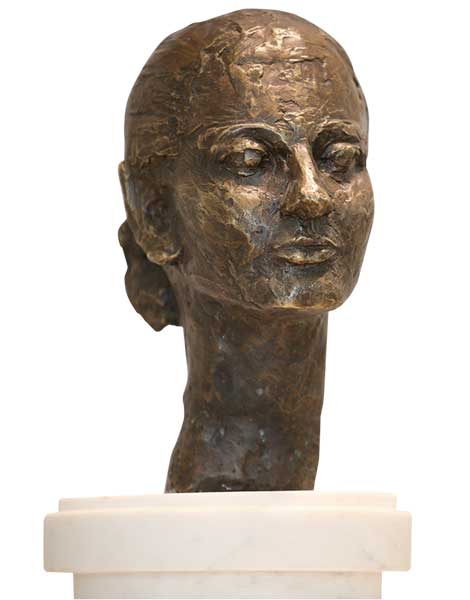
© Charis Akriviadis
“A minimum income”
In 1939, Maria appeared for the first time at the Olympia Theater, now the Olympia Municipal Music Theater Maria Callas, in the role of Santuzza in a student production of Pietro Mascagni’s Cavalleria Rusticana. At the end of 1939, de Hidalgo intervened on Maria’s behalf with the director of the Greek National Opera, suggesting he hire her as a member of the chorus but without her having to attend rehearsals or performances, in order to secure for her protégé a minimal income that would enable the girl to continue her studies without distraction.
Maria made her professional debut with the then recently established Greek National Opera during the 1940-1941 season, in the modest role of Beatrice in Franz von Suppé’s Boccaccio. In the same period, the Royal Theater staged a production of Shakespeare’s The Merchant of Venice at the Ziller Building on Aghiou Konstantinou Street, with the celebrated Alexis Minotis in the role of Shylock. The production also included excerpts from Humperdinck’s opera Hansel and Gretel. Although there are no written accounts, it is possible that Maria sang some pieces from the stage wings. Callas herself reminded Minotis about it when she met up with him in Dallas in 1959. Shortly after, due to the threat of aerial bombardment, both the building on Aghiou Konstantinou and the Olympia Theater were closed, and all performances were staged at the Pallas Theater on Voukourestiou Street, which had a bomb shelter.
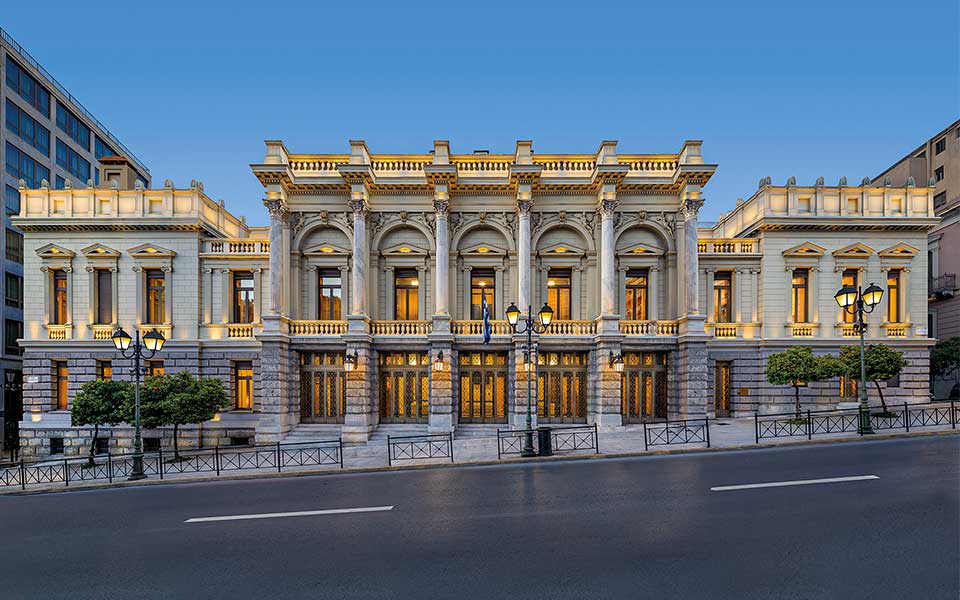
© Thomas Gerasopoulos
On August 27th, 1942, Callas played the role of Tosca at the Summer Theater in Klafthmonos Square, and in the spring of 1944 played Marta in the opera Tiefland at the Olympia Theater. In July of the same year, she appeared for the first time at the ancient Odeon of Herodes Atticus, as Smaragda in Manolis Kalomiris’ The Master Builder. On August 14th, the eve of her name day, Maria returned to the stage of the Odeon, this time as Leonore in a Greek-language production of Beethoven’s Fidelio, under the musical direction of Hans Herner and directed by Oskar Wallek. Her performance garnered critical acclaim in the Greek and international press, with some critics declaring it to be her greatest triumph. Such praise undoubtedly made Callas start to think that Greece no longer sufficed for her ambitions.
She finally departed for New York in September 1945. “Callas knew from the beginning who she was. The Greek scene was too small for her potential. She had such self-knowledge that, even at the age of 15, she knew she needed to leave Trivella and seek a teacher who could help her evolve, like Elvira de Hidalgo had done,” says Louras.
In 1957, Callas – who was by this point a global celebrity – returned to the Odeon of Herodes Atticus to perform a recital of opera arias by Donizetti, Verdi, Wagner, and Thomas. But she still harbored resentment against Philoctetes Economides, her former nemesis who had openly criticized her singing. In a letter to Achilleas Mamakis, then director of the Athens Festival, she wrote: “I have no problem with a Greek maestro directing in Athens, if that is what you wish. But it would be better if Mr. Economides, specifically, sat in the stands with the audience. He will thus have the opportunity to determine whether I do indeed have a voice.”
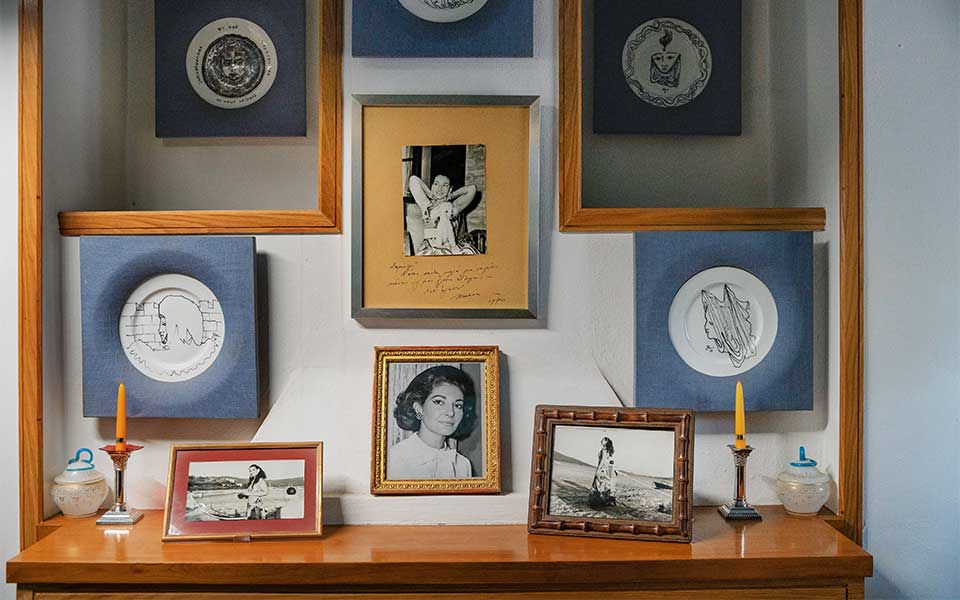
Searching for Callas
The judgment of history has come down on the side of Callas, but Greece itself was late in recognizing her genius. Callas herself said in 1957 that Greece had left her feeling “bitter.” Today, 46 years after her demise, a bronze statue of the soprano by the sculptor Aspasia Papadoperaki, who also created her bust at the Athens Concert Hall, appears to “gaze at us” from Madritis Square behind the former Hilton Athens. Another statue, created by artist Aphrodite Liti based on one of Callas’s performances at La Scala in Milan, can be found on Dionysiou Areopagitou Street.
At the Megaro Moussikis metro station, Maria “greets” thousands of Athenian commuters as they head to the platforms just outside the Athens Concert Hall from the iconic photo of her legendary 1958 performance at Covent Garden as Violetta Valéry in the Verdi opera La Traviata. Callas played the character of the wayward heroine ten times in that year alone, out of a total of 63 times in her career.
Traces of hers also remain at the Maria Callas Museum in Athens, housed in a listed building on 44 Mitropoleos Street, which was opened to commemorate the centenary of her birth. The museum᾿s permanent exhibition features a variety of audio recordings from her acclaimed performances in international theaters, alongside a collection of her personal belongings, photographs, event programs, sheet music, and various publications related to her performances. There is also a documentary by musicologist Aris Christofellis available on GNO TV that covers the repertoire that Callas sang from 1937 to 1945. Regarding the Papaleonardou apartment building (built in 1925) at 61 Patission Street, where she once resided, the Municipality of Athens has pledged to restore it and it’s expected to accommodate the Maria Callas Academy of Lyric Art.

